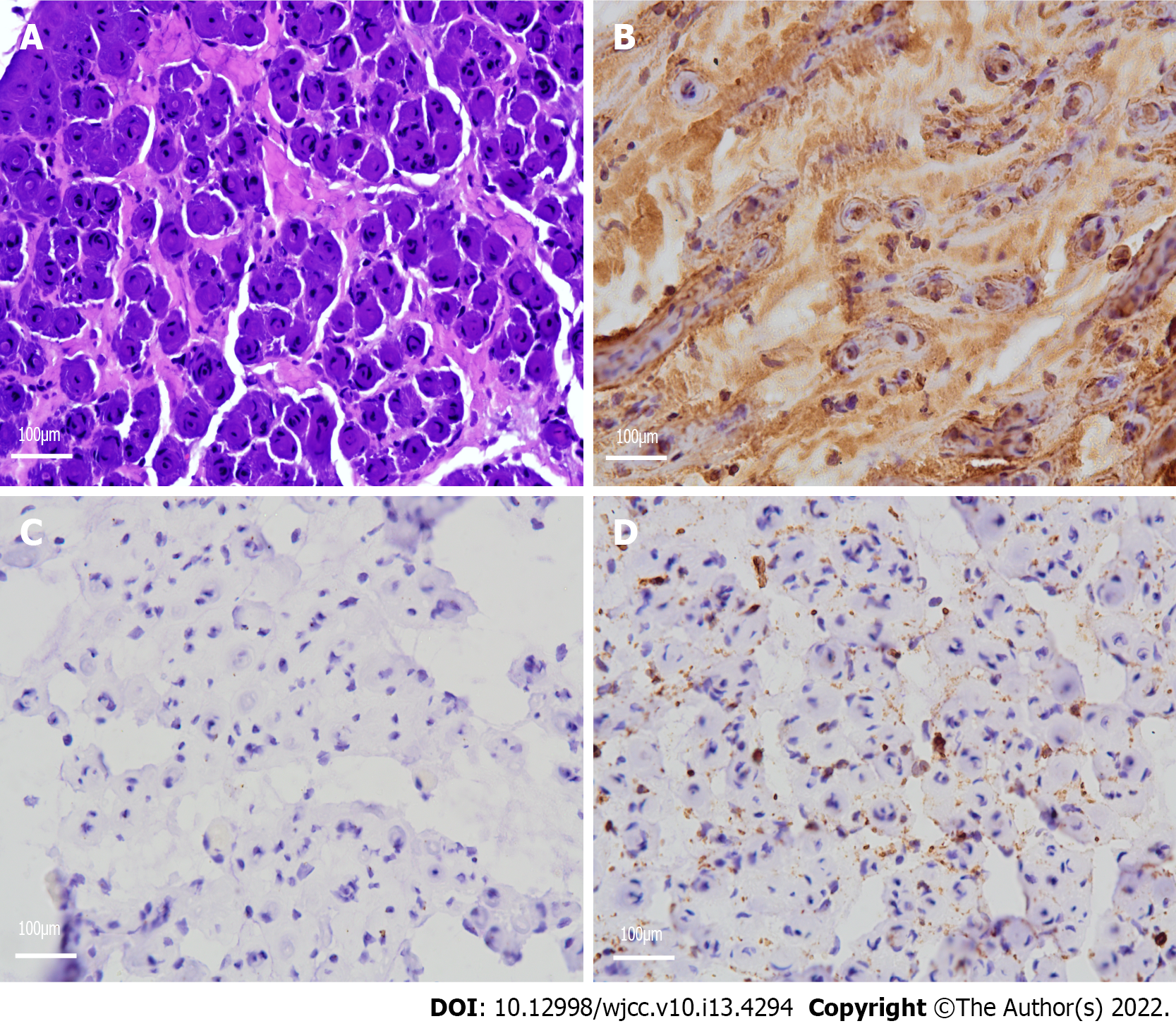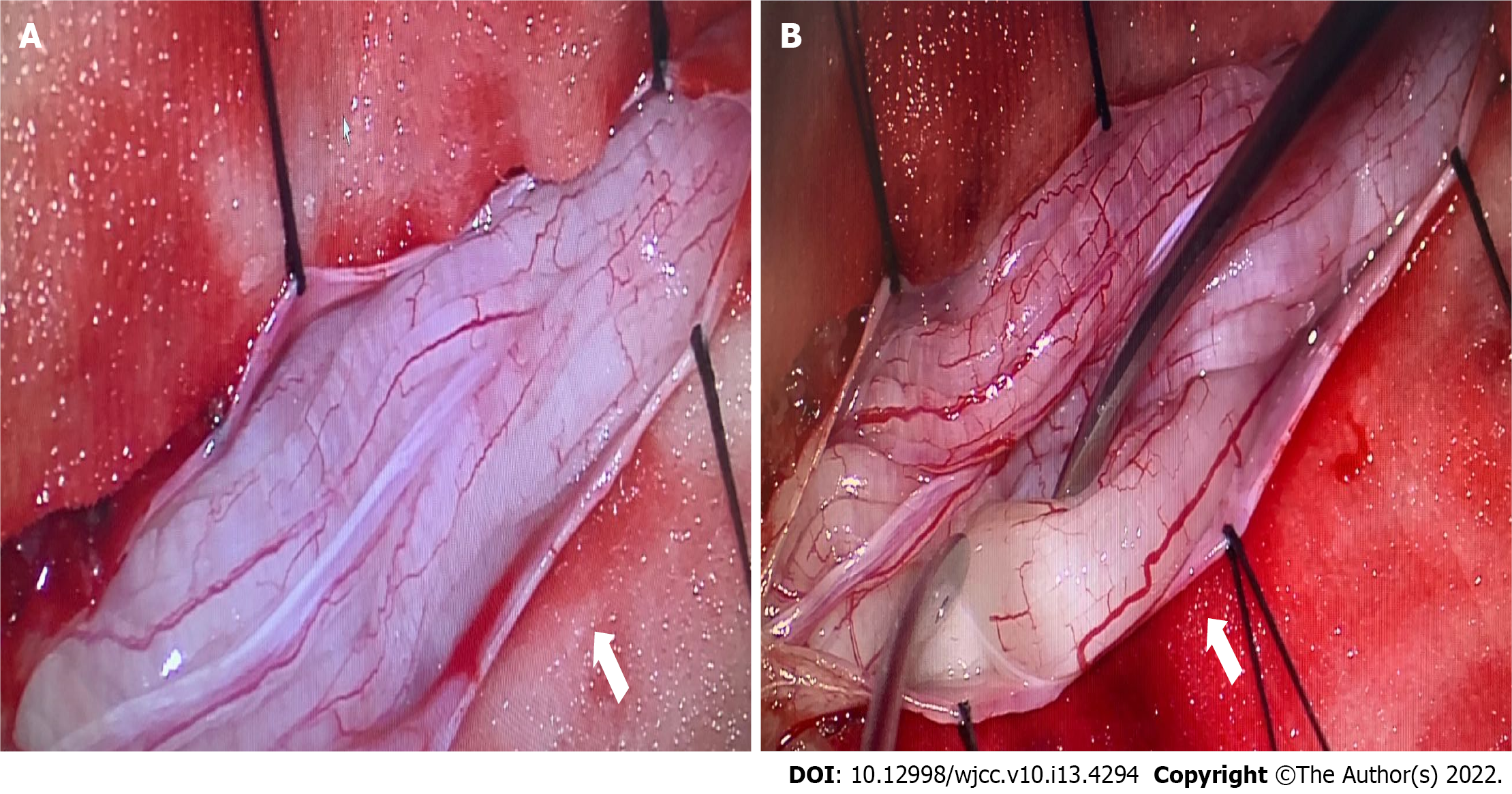Copyright
©The Author(s) 2022.
World J Clin Cases. May 6, 2022; 10(13): 4294-4300
Published online May 6, 2022. doi: 10.12998/wjcc.v10.i13.4294
Published online May 6, 2022. doi: 10.12998/wjcc.v10.i13.4294
Figure 1 Image of T2-weighted magnetic resonance imaging.
A: Diffuse thickening of nerve roots in the spinal canal is seen on magnetic resonance imaging (MRI) sagittal T2 slices (white arrow); B: Extraforaminal nerve root also showed signs of thickening on MRI sagittal T2 slices (white arrow); C: The spinal canal was almost filled with hypertrophic cauda equina on MRI axial T2 slices (white arrow).
Figure 2 Pathological findings.
A: Toluidine blue staining of a cross-section of the nerve root demonstrated numerous onion bulbs and significant loss of large myelinated axons (Magnification: 200 ×); B: Immunohistochemical staining for S100 protein showing positivity of the onion bulbs (Magnification: 200 ×); C: Immunohistochemical staining for epithelial membrane antigen showing negativity of the onion bulbs (Magnification: 200 ×); D: Immunohistochemical staining for leukocyte common antigen showing negativity of the onion bulbs (Magnification: 200 ×).
Figure 3 Gross intraoperative view.
A: Diffuse enlargement of exposed nerve roots (white arrow); B: The nerve root of the cauda equina selected for biopsy (white arrow).
- Citation: Ye L, Yu W, Liang NZ, Sun Y, Duan LF. Spinal canal decompression for hypertrophic neuropathy of the cauda equina with chronic inflammatory demyelinating polyradiculoneuropathy: A case report. World J Clin Cases 2022; 10(13): 4294-4300
- URL: https://www.wjgnet.com/2307-8960/full/v10/i13/4294.htm
- DOI: https://dx.doi.org/10.12998/wjcc.v10.i13.4294











